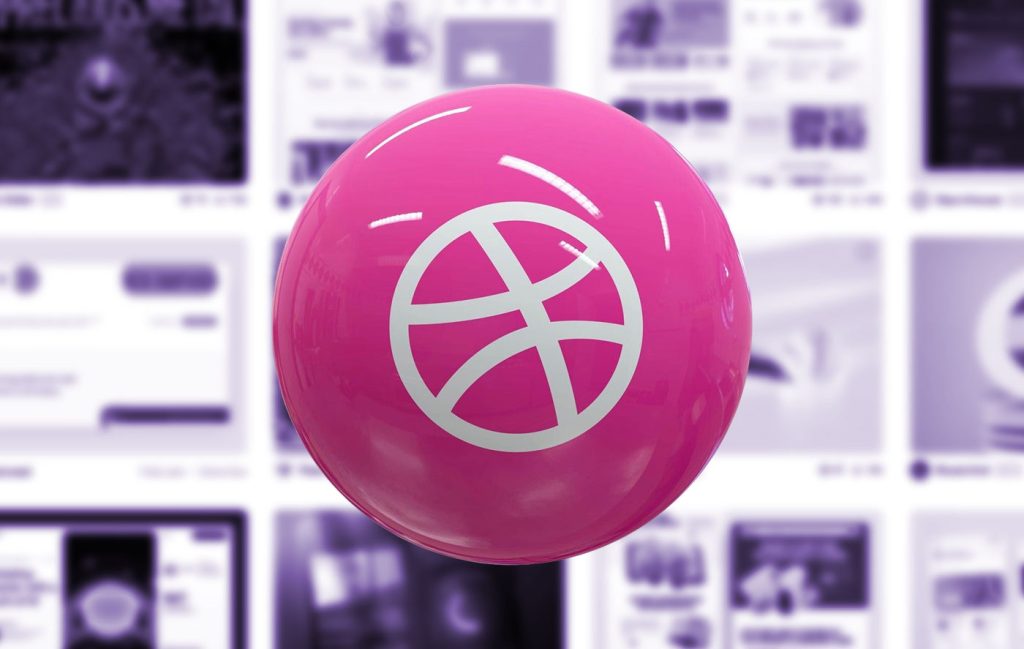Ah, company rebrands—the cornerstone of any business looking to save their skin after months of falling sales, PR nightmares, and poor public perceptions.
We’ve seen some terrible brand identity changes over the years (we’re looking at you, Gap). Fortunately, we’ve also witnessed some incredible rebrands that have altered public perception and catapulted companies back into the limelight. In this article, we’re going to cover the ten best of all time.
But, before we get into the list, we need to tackle a little point of contention. Let’s define what we mean when we talk about a ‘rebrand’.
What do we mean by a successful ‘rebrand’?
When most of us think of rebrands, we think of logo changes and name alterations. While these are often the hallmarks of a visual identity switch-up, they aren’t the only way a business can rebrand.
By definition, a rebrand is anything a company does to change its corporate image. How a company achieves this goal is less important than the end result.
Whether it’s a life-saving new logo, ingenious ad campaign, or strategic marketing ploy, as long as a company finds a way to hit the big red reset button and change public perception, it’s a rebrand.
Now that we’ve cleared that up, let’s get onto the list.
10) Dunkin’ – Wait, they sell more than just donuts?

When Dunkin’ dropped their donuts back in 2018, public reception was understandably mixed. Many couldn’t comprehend why one of America’s most popular fast-food chains needed to shorten its iconic name.
Others, however, responded positively. Many understood that the business wanted to change its brand to remind consumers it wasn’t just a donut shop. After all, the company’s coffee and sandwich offerings were just as popular as its selection of sweet treats.
The Dunkin’ rebrand was hugely successful. The attention the new name received, both good and bad, helped Dunkin’ to continue its strong growth trajectory. Plus, we’re sure they acquired at least a few extra customers who realized the company has more on offer than donuts. Win-win.
9) Instagram

When Instagram unveiled its new logo design back in 2016, the change sent the community into uproar. Most thought the rebrand was a terrible idea (oh, how the internet loves sudden changes). Many complained they couldn’t find the app on their phone anymore. Some even believed their device was under attack from malware because they didn’t recognize the new icon.
Of course, Instagram had its reasons for the change. The social media site wanted to reflect the fact that Instagram was no longer a simple photo-sharing app but a world-leading platform with numerous features.
Over time, consumers grew increasingly familiar with the new logo as their memories of the previous Polaroid camera icon slowly faded.
Instagram’s logo change was a success on two fronts. First, it was a necessary change to reflect the company’s shift to a more diverse social website. Second, whether you loved it or loathed it, Instagram’s rebrand got everyone talking. And, if there’s one thing we know about multibillion-dollar corporations, they absolutely love to be in the spotlight.
8) CVS –

Ah, the pharmacy – the perfect place to pick up your medication, buy essential toiletries, and get your nicotine fix for the day. Wait, what?
Back in 2014, CVS became the first large-scale pharmacy chain in America to stop selling tobacco products. Sure, this may seem like a reasonably obvious rebranding for a pharmacy, but it’s important to note that cigarettes comprised 4% of the firm’s annual sales. This was the brand’s way of saying that some things are simply more important than profit (take notes, Bezos).
In the process, CVS also changed its name from ‘CVS Caremark’ (whatever that means) to CVS Health. Perhaps this change was in the works for a long while but the company couldn’t risk putting ‘health’ into their branding while they still had cigarettes in their stores. I guess we’ll never know.
The rebranding was a strong statement and proved CVS’s commitment to creating a healthier America. The company’s revenue has grown at an annual rate of 10.8% ever since.
7) LEGO – Remembering the reason they were popular

Back in the early 1990s, LEGO was on top of the world. The company was going from strength to strength. Every kid wanted to try the toys, and most already had.
Sadly, LEGO’s overconfidence was its downfall. The company began to rapidly expand into new markets in an attempt to diversify its offerings.
Suddenly, LEGO wanted a slice of every pie in the market. The brand invested in video games, action figures, sports sets, comics, jewelry for kids, animated movies, books, and much, much more.

Through all of these investments, however, LEGO lost sight of the reason they were so popular in the first place – kids. And what do kids want from LEGO? The ability to build things themselves, of course (this seems obvious with the benefit of hindsight).
In 2003, LEGO realized its expensive mistake. After reporting over $300,000,000 in losses, the company pledged to return to its roots, promptly scrapping its pre-built action figures in favor of good old-fashioned bricks.
All was right again in the world. Kids were encouraged to be creative once again, and LEGO once again ascended to become the world’s biggest toy company, proving that sometimes, less really is more.
6) Mcdonalds – Health epidemic to health-conscious

Those of us who visited Mcdonald’s in the 1990s may have vivid memories of kitschy yellow interiors, hamburger seats, and McDonald’s brand ashtrays. Sadly, however, the fast food brand is more commonly known for its range of unhealthy food options than its unusually lavish interiors.
Following the release of Morgan Spurlock’s 2004 documentary Super Size Me, in which the host attempted to live entirely on McDonald’s food for a month (with disastrous consequences), McDonald’s knew it had to act fast to fix its public image.
The fast food giant immediately began its rebranding process. New healthy lunch items like wraps and salads were introduced. The opening of McCafe swapped McFlurry’s for herbal teas and coffees. The company even redesigned its locations to represent its new sophisticated approach to fast food. All in all, it felt like McDonald’s had matured from an unhealthy teenager into a health-conscious adult.
It goes without saying that the rebranding efforts were hugely successful. While Mcdonald’s is still fighting tooth and nail to clean up its public image, the company’s new health-conscious brand story has given the fast food chain the opportunity to prove it’s worth as more than a grab-and-go burger joint.
5) Stella Artois –

For decades, Stella Artois was synonymous with beer bellies, binge drinking, and British hooliganism. The lager stood nervously as the holy grail of lager louts worldwide.
The brand’s motto of being ‘reassuringly expensive’ fell flat when supermarkets began offering the lager at a discounted rate. Any self-respecting drinker would stay well away from the beverage, and if they did choose to consume it, they’d likely ask for it in a non-branded glass to avoid awkward sideways glances from their peers.
By 2010, Stella Artois knew that something needed to change. In collaboration with New York-based marketing agency Mother, the company embarked on a campaign to change the public perception of its disgraced brand. Mother began by conceiving a new slogan, She is a thing of beauty, in an attempt to position the brand as exotic and romantic. The new brand position was accompanied by a 9-step pour guide, with the aim of reminding consumers that Stella could be consumed in a glass as well as out of a can.
Consumers were convinced. “Surely a brand with a 9-step pour guide can’t be the favored beverage of violent binge drinkers?”, they thought. “In that case, this must be a lager for the sophisticated alcohol consumer”.
As if by magic, Stella was a premium product again. The company rapidly shed its ugly skin as the king of cheap lagers and quickly became a sought-after offering in pubs, bars, and restaurants throughout the UK.
4) Apple – It’s not an electronic. It’s a lifestyle

Considering the universality of Apple’s products today, it may be surprising to learn the company was once on the brink of bankruptcy.
Unlike many rebrands on this list, Apple’s change of fortune was not an overnight success story, nor was it the result of a single ad campaign. Instead, the tech company made a series of ingenious moves to make consumers perceive Apple not as an electronics company, but as a lifestyle brand.
Jobs knew that Apple’s strong suit lay in its ability to make new technology accessible to everyone, and he played into this strength expertly.
Suddenly, all of Apple’s products were no longer mere electronics. They were an extension of those who bought them – a component of the ideal lifestyle. With the help of sleek packaging and clever marketing campaigns, Jobs turned Apple’s products from cool tech items into must-have status symbols.
Steve Jobs’ ambitions worked out perfectly. Apple continued to grow steadily for almost a decade. Then, in 2007, they debuted the first iPhone. You already know the rest.
3) Old Spice – It turns out you can teach an old dog new tricks.

Old Spice released its first product all the way back in 1937. Unfortunately, the company’s status as an old-school icon did little to save it from an unfashionable reputation.
For decades, Old Spice just couldn’t seem to shake the stereotype that it was a brand for older men. Even the 40-60-year-old demographic considered themselves too trendy to use the product range. And the younger generation? Forget about it. Expecting a teenager to wear Old Spice before a college class was like giving them VHS tapes to go to a Netflix party. Like a flip phone in a hipster coffee shop, it felt terribly outdated.
In an attempt to appeal to younger demographics, Old Spice designed a series of tongue-in-cheek adverts that half-jokingly positioned the brand as the peak of masculinity.
The company fielded pop culture stars like LL Cool J, Isaiah Mustafa, and Brian Urlacher to sell the product in a series of commercials noted for their quirky humor, satire, and rapid shifts in tone.

The ads were an immediate success. Some, such as the ‘Man Your Man Could Smell Like‘ campaign, went viral instantly. Just like that, the cobwebs were gone. Old Spice was cool again. Millennials resonated with the brand’s humorous new identity, and Old Spice gained a new lease of life. Sales skyrocketed by 125 percent by the end of the year. Ah, the power of great marketing.
2) Walmart – Save money (but not too much).

Walmart’s 2008 switch-up still stands as one of the most impactful rebrands of all time.
For years, the retail chain was perceived as ‘the place you go to buy really cheap stuff’. The business was famed for its low prices, and when the store first opened in 1962, this was a big draw.
Over time, however, consumers grew more sophisticated. People had more disposable income and wanted to use it on new, premium products. The company needed to diversify its business strategy if it hoped to keep up.
Walmart’s brand alterations began with a logo change. The organization also ditched its old ‘Always Low Prices’ slogan in favor of a slightly less savings-centric ‘Save Money. Live Better’. Walmart even launched new products and redesigned its stores to promote the grand overhaul.
As you’ve probably guessed, the rebrand was enormously successful. Sales skyrocketed as millions of consumers flocked to Walmart to see what all the fuss was about. The brand was quick to cement its spot as America’s number-one retail corporation.
The lesson? It’s okay to promise affordability, but go too cheap, and your consumers will assume your products are low-quality.
1) Burberry – from hooliganism to haute couture

When famous British pop and garage artists began donning Burberry clothing back in the early 2000s, the brand hoped the endorsements would be their ticket to appealing to the younger generation.
Sadly, Burberry got more than they bargained for when their trademark check pattern became the hallmark of British hooliganism and lawlessness.
The situation grew so dire that some pubs and bars wouldn’t allow anyone wearing the brand to enter their premises. Even the most upstanding of citizens spotted wearing a checkered Burberry coat and hat combo would be offered a suitably wide berth on the high street. It all became a little bit manic.
Fast forward to 2009. Enter global megastar, Emma Watson. The leading actress was at the height of her Harry Potter fame when Burberry creative director Christopher Bailey approached her to be the face of the brand. Evidently not fearing the possibility of being labeled a hooligan, Watson accepted.
In the actress’s most incredible display of magic since her role as Hermione Granger, Emma Watson cast a forgetfulness charm on the entire nation, turning Burberry from a hooligan hallmark to a desirable fashion brand in a single iconic photoshoot.

Suddenly, Burberry was all the rage again. The rebranding campaign catapulted the organization back into the limelight. Sales increased by 23% to £215m by the end of 2009, with Burberry’s new identity allowing it to gain a stronger foothold in the US market.
Shutting up shop
What lessons can we learn from this list? There are too many to count. Wait for the right time to rebrand. A controversial change isn’t necessarily a bad one. Don’t lose sight of the core values that your consumers know you for. Remain adaptable. And, if all else fails, pay for Emma Watson to do a photoshoot with your product. Simple!
Did you agree with our ranking list? Did we miss something? Tweet at us and let us know your thoughts.






